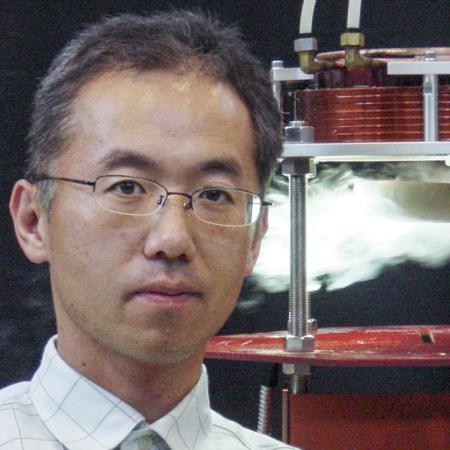
Nagato Yanagi
Nagato Yanagi
National Institute for Fusion Science
Wednesday, February 24, 2016
11:00am
Abstract
Conceptual design studies of the helical fusion reactor FFHR-d1 [1] are progressing at National Institute for Fusion Science (NIFS). Innovative ideas are incorporated in the “challenging” option of the design. For the helical coils, the High-Temperature Superconductor (HTS) is considered with STARS (Stacked Tapes Assembled in Rigid Structure) configuration, which is suitable for DC magnets with simple stacking of HTS tapes. A prototype sample achieved 100 kA at 20 K, 5.3 T, and a mechanical bridge-type lap joint (developed in collaboration with Tohoku Univ.) assesses “Joint-Winding” with segmented 3,900 conductors [2]. A new test facility, with a 13 T, Ø700 mm solenoid, 4-50 K temperature control, will be used for further development of STARS conductor as well as for conductors in the world, such as TSTC (Twisted Stacked-Tape Cable) HTS conductor developed at MIT.
The “challenging” option considers FLiNaBe for the liquid breeder blanket with a new idea of metal powder inclusion to increase hydrogen solubility. A world-largest-class loop facility, Oroshhi-2 [3], is used for this research, equipped with a 3 T, Ø500 mm split magnet. An innovative idea of vertical liquid divertor, REVOLVER-D, is also being quickly developed.
[1] A. Sagara et al., Fusion Engineering and Design 89 (2014) 2114.
[2] N. Yanagi et al., Nuclear Fusion 55 (2015) 053021.
[3] A. Sagara et al., Fusion Science and Technology 68 (2015) 303.
Bio
Dr. Nagato Yanagi is a professor and Task Leader at Superconducting Magnet Task in the Fusion Engineering Research Project at National Institute for Fusion Science (NIFS) in Japan. He received Ph.D. in engineering from Kyoto University in 1995. In 1989, he joined NIFS and started his career on the superconducting magnet at the beginning of the Large Helical Device (LHD) project. He found a way to increase the cryogenic stability of the aluminum-stabilized superconductor used for the helical coils by reducing Hall current generation. After the completion of LHD construction, he had a chance to work on the Mini-RT project at Tokyo University in 1999. Mini-RT employed HTS for levitated dipole as the world first application for fusion and plasma research. He started development of HTS STARS conductor for the helical fusion reactor FFHR in 2005 and achieved 100 kA in 2013.